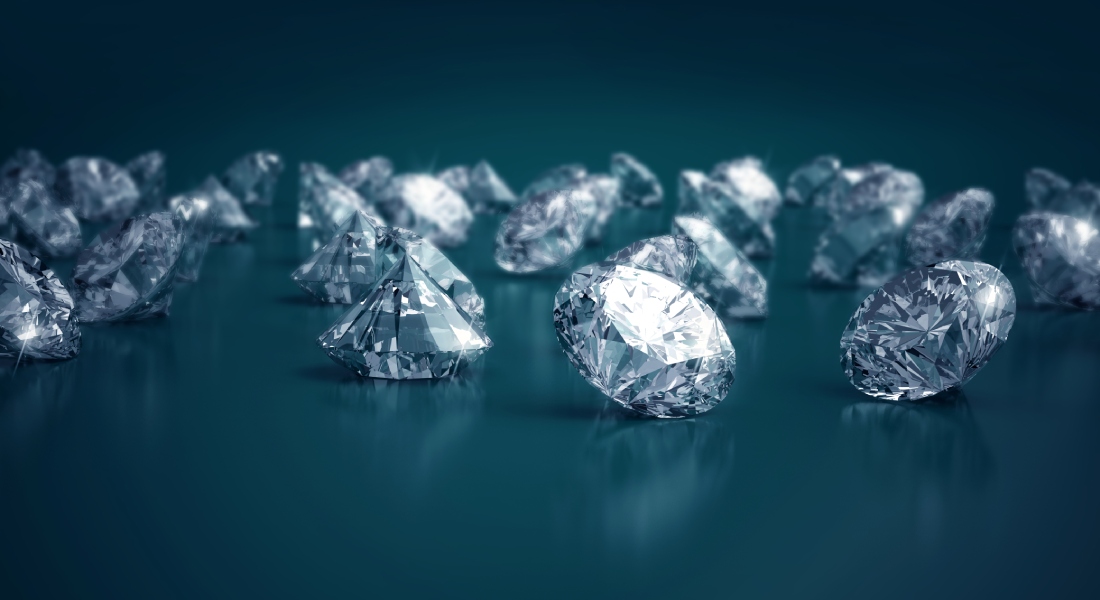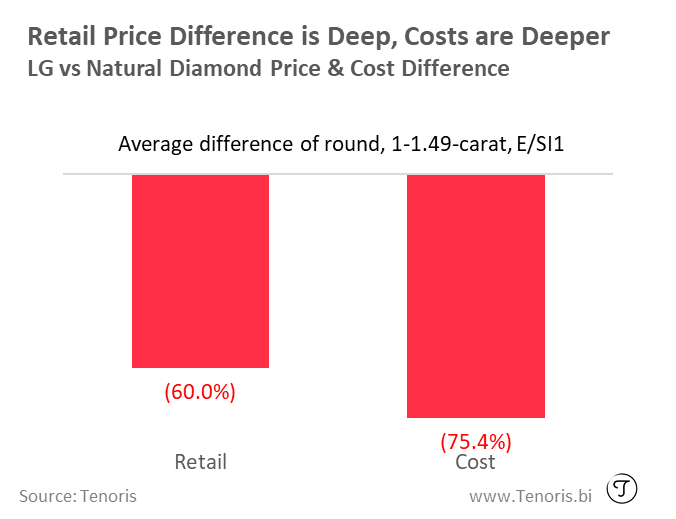Wholesale LGD prices are dropping and likely to fall further due to various forces, such as increased production, a crowded market and sales difficulties, informs diamond analyst Edahn Golan.
Since the first quarter of 2020, polished wholesale prices of lab-grown diamonds (LGDs) have been sliding. Some specific items rose here and there, but overall, the general movement has been downward, according to the LGD Index.
In the third quarter of 2021, prices continued to decline for almost all goods except smalls. Rounds weighing half a carat and smaller had a 0.7-1.6% rise compared to the second quarter of 2021.
Larger goods suffered from a price decline – in some cases a sharp decline. For example, 1.5-carat rounds fell 4.6% during the quarter.
Why Are Prices Falling?
The decline is a conundrum. On one side of the LG pipeline, the number of producers is rising as is the output, but pricing of LG rough was fairly steady until now.
At the other end of the LG pipeline, consumer demand only increased in the 18 months that have passed since that peak. The number of speciality jewellery stores that offer LG jewellery has more than doubled, and sales rose with it.
With pricing of rough LG steady and consumer demand rising, prices should be rising. At least, that is the straightforward economic theory.
Some may have it that the drop in LG prices is because LG has no value. However, there could be a different way to read the map: Congestion.
When LG just started to rise, many traders who struggled with natural diamonds, gravitated towards it. When LG became established in the consumer market, many large firms also entered the field.
Natural diamonds make up largely a volume game, and now LG has followed suit. But with a low-cost product, you have to sell much more volume to generate the same profit. And that was the first major issue to hit LG traders.
Suddenly, smaller traders and manufacturers found that issues with naturals they had been struggling with followed them to LG: payment terms, demand for memo, and stiff competition.
It is this combination of a crowded market and sales difficulties that are the main contributors to declining wholesale LG prices.
The Price Gap Holds a Promise
The price gap between natural diamonds and LG remains a large one. In September, the average retail price of round, one-carat, E/SI1 diamonds was $8,900 per carat. This compared with $3,557 for LG – a 60% difference.
The retail cost gap was even larger. Natural diamonds sold in September cost retailers on average $5,475 per carat compared to just $1,349 p/c for LG. This is a massive 75% difference.
The huge gap hides a story: Retailers’ gross profit margin for the natural diamond in the above example is 38.5%. But for the LG diamond, it was 62.1%. While the 38% is normal for retailers, 62% is a huge profit rate.
This is where the opportunity lies for LG manufacturers and traders.
The Prospects Ahead
Currently, LG rough prices are starting to decline, but only for some items. However, as the number of traders is declining, and more and more manufacturers are growing their production, rough CVD is expected to post further declines.
The holiday season will, as always, generate a large cash flow, which is always good news. However, that is the picture for the short term.
For the long term, the share of bridal that LG will capture this holiday season is a key question. If LG succeeds in capturing a growing share of this market, it will be at the expense of natural diamonds, and that will indicate a change in the consumer mindset.
Such a change my be considered positive for those in the LG business, and very bad news for natural. But there is another angle to this.
LG is promoted as the low-cost alternative. As such, this will push down LG prices in the retail market. A retail gross of 62% is not sustainable. Retailers will be forced to reduce prices, and that will inevitably impact wholesalers as well.
At that point, the volume game may become far more vicious.
—
Edahn Golan is a veteran of the diamond industry, researching and writing about it since 2001. He specialises in a wide range of topics relating to this unique industry, including the way it operates, wholesale and retail polished diamond prices, the rough diamond sector of the diamond pipeline and investment in diamonds. Edahn has written extensively about these subjects and many others, including the Kimberley Process (KP), financing issues, ethics and changes in the way the diamond industry has operated over the years. Prior to founding Edahn Golan Diamond Research & Data, Edahn joined the IDEX Online Group to form the news and research department of its newly launched website. Over the years, Edahn has advised leading diamond firms, industry bodies, investment companies and governmental agencies, writing research papers on topics ranging from provenance analysis of fancy color diamonds and the diamond’s contribution to local economies to the viability of investment in diamonds.
Follow him on Twitter @edahn.




